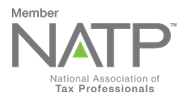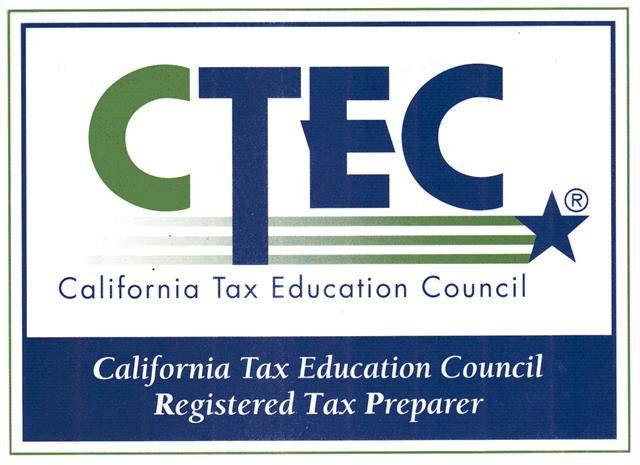
by Taxing Subjects | Sep 23, 2023 | Tax Tips and News
As of last week, the Internal Revenue Service (IRS) has taken decisive action to address concerns regarding the improper filing of Employee Retention Credit (ERC) claims, announcing a moratorium on new claims through at least the end of the year. This decision is aimed at protecting unsuspecting tax businesses from falling prey to scams that are orchestrated by aggressive promoters of the credit; these egregious marketers have been targeting ineligible applicants, who risk paying the credit back on top of interest and penalties.
What is the ERC?
The ERC is a legitimate pandemic-era tax credit designed to support businesses that continued to pay employees during the COVID-19 pandemic while facing operational suspensions or significant declines in gross receipts. The program is not available to individuals.
To be eligible for the ERC, employers must meet extremely specific requirements, including sustaining a suspension of operations due to government orders, experiencing significant declines in gross receipts, or qualifying as a recovery start-up business during specified periods.
The Employee Retention Credit is notoriously complex, and its esoteric qualifications affect multiple government agencies; with this high level of intricacy, and now the potential risk of being scammed, many legitimate businesses are now hesitant to claim the credit, or potentially even try.
How are businesses being scammed?
The moratorium, ordered by IRS Commissioner Danny Werfel, comes in response to increasing evidence of ineligible and potentially fraudulent claims entering the system. The IRS had previously intensified its focus on reviewing ERC claims for compliance concerns, including escalating audit efforts and criminal investigations into promoters that filed suspicious claims.
However, as of July 31, 2023, the IRS-CI initiated 252 investigations involving over $2.8 billion of potentially fraudulent ERC claims, resulting in federal charges for fifteen of these cases. Six matters have led to convictions, with an average sentence of 21 months. These efforts are part of the IRS’s broader strategy to address COVID-related fraud, totaling over $8 billion in suspected pandemic fraud.
To avoid fraudulent efforts in relation to the ERC, businesses should remain cautious about aggressive marketing tactics that promote risk-free ERC submissions. The IRS has identified several warning signs, such as unsolicited calls or advertisements offering an “easy application process” and promoters claiming they can quickly determine eligibility. Furthermore, large fees up-front and fees based on a percentage of the ERC refund are also red flags.
For businesses, there are significant risks associated with improper claims, including the potential repayment of credits along with penalties and interest. To protect against questionable claims and potential scams, businesses should collaborate with trusted tax professionals who understand the complex rules associated with the ERC. Additionally, the IRS has released tools to help determine ERC eligibility, including an FAQ page and a question-and-answer guide. If a business suspects a scamming attempt, Form 14242 can be used to report suspicious or abusive tax promotions.
What should businesses know about the moratorium?
For those who have already filed to claim the credit, payouts for legitimate ERC claims will continue during the moratorium period at a slower pace. The processing time for existing ERC claims will extend from the standard 90 days to 180 days or more, depending on the level of compliance review required. The IRS may also request additional documentation from taxpayers to verify the legitimacy of their claims.
Our Chief Revenue Officer at Drake, John Sapp, CPA, puts it this way: “IRS is slowing down the ERC payment process to circumvent fraud. Similar to when police setup a random ‘license checkpoint’ – it slows down traffic but may keep unlawful drivers from getting on the road.”
Additionally, the IRS is developing new initiatives to assist businesses victimized by these aggressive scammers, including a settlement program for reimbursement of improper ERC payments. Likewise, a specialized option to withdraw claims will be made available for those who have filed unprocessed ERC claims. Ideally, this functionality will help businesses avoid repayment issues and the payment of contingency fees to promoters. However, it’s important to note that individuals who have filed fraudulent claims may still face criminal investigation and prosecution if they choose to withdraw.
In its broader compliance efforts, the IRS is collaborating with the Department of Justice to combat ERC fraud and take action against marketers disregarding the program’s rules. Auditors with specialized training are examining ERC claims with the highest risk of noncompliance, while the IRS Criminal Investigation division actively identifies promoters of fraudulent claims for potential referral to the Department of Justice.
Overall, the IRS has recently taken measures to address concerns regarding improper ERC claims and protect businesses from fraudulent schemes. The IRS efforts through the moratorium on new claims, enhanced compliance reviews, and collaboration with the Department of Justice seek to uphold the ERC program and prevent abuse, ideally empowering eligible and legitimate businesses to claim the credit without fear of being exploited or reaping financial repercussions. As a tax professional, you can advise and guide your clients to exercise caution when dealing with belligerent promoters and take necessary next steps if they are implicated in fraudulent activity.
Sources:
Red flags for Employee Retention Credit claims; IRS reminds businesses to watch out for warning signs of aggressive promotion that can mislead people into making improper ERC claims
Employee Retention Credit Eligibility Checklist: Help understanding this complex credit
– Article provided by Taxing Subjects.
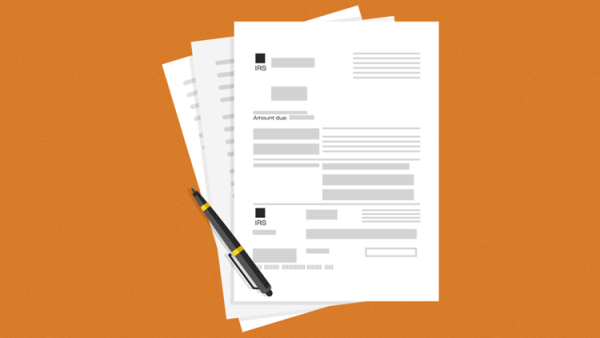
by Taxing Subjects | Sep 16, 2023 | Tax Tips and News
The Internal Revenue Service says it’s about to move its main audit spotlight from the everyday working-class individual taxpayer to those engaged in high-income activities. Now on the audit radar: high-income earners, partnerships and large corporations, and promoters pushing schemes that abuse the tax laws.
This turn of focus comes after a comprehensive review of IRS enforcement efforts funded by the Inflation Reduction Act. All changes are meant, the IRS says, to help restore fairness in the American income tax system.
So Why Do This Now?
The audit rates for the wealthy, partnerships and other high earners have dropped sharply over the last 10 years. New technology, such as Artificial Intelligence, can now be used to crack complex financial arrangements in record time — an effort that used to take human enforcement agents months.
The upgrade in technology will help the IRS spot emerging compliance threats and schemes early on, while also improving decision-making for audit selection of taxpayers so that “no change” filers are not unduly burdened.
Called the High Wealth, High Balance Due Taxpayer Field Initiative, the new IRS effort focuses on taxpayers with total positive incomes above $1 million and more than $250,000 in tax debt.
The agency has had some measure of success recently with high-income tax cases, collecting some $38 million from more than 175 high-income earners. The IRS says that effort will be expanded with the new initiative, contacting about 1,600 taxpayers and hopefully collecting hundreds of millions of dollars in taxes owed.
Turning Scrutiny Toward Large Partnerships.
As of 2021, the IRS already had a Large Partnership Compliance (LPC) program, but the IRS intends to expand it, increasing the number of partnerships examined to take in some of the biggest and most complex partnership returns the agency receives. This, the agency says, is where AI can help, speeding up the screening process of complex returns and flagging those returns that need closer examination.
This part of the upgrade plan could become reality very soon, with examinations planned for 75 of the largest partnerships in the country. These companies have an average of $10 billion in assets each, and include hedge funds, real estate investment partnerships, publicly traded partnerships, large law firms, and others.
Other Work slated for 2024 includes:
- Expanded scrutiny of digital assets. A review of the IRS Virtual Currency Compliance Campaign showed as many as 75% of taxpayers with digital assets could be non-compliant on their income tax returns, according to records from digital currency exchanges.
- Examination of high-income taxpayers for FBAR violations. A Report of Foreign Bank and Financial Accounts (FBAR) is required when a U.S. citizen has an interest in a foreign financial account holding more than $10,000 in value. The IRS took a look at filing patterns and found hundreds of possible FBAR non-filers with average account balances of over $1.4 million.
- Investigating shell companies posing as labor brokers. Tax investigators say they’ve found instances where construction contractors are making 1099-MISC or 1099-NEC payments to what appears to be a subcontractor – but it’s a “shell” company with no employees, no equipment, and no business links to the contractor. The money paid, ostensibly for labor services, instead flows back to the contractor’s pocket.
As part of the overall effort, the IRS is also working to help individual filers who are not considered “high-income.” The audit rates for taxpayers making less than $400,000 a year are being held steady. Fairness safeguards are also being added for individual taxpayers claiming the Earned Income Tax Credit, or EITC.
Taxpayers claiming the EITC were historically audited more often than those at the upper end of the income scale. In fact, audit rates for high-income-level filers, corporations and partnerships dropped sharply in recent years while the much-less well-off taxpayers saw higher audit rates.
Source: IRS announces sweeping effort to restore fairness to tax system with Inflation Reduction Act funding; new compliance efforts focused on increasing scrutiny on high-income, partnerships, corporations and promoters abusing tax rules on the books
– Article provided by Taxing Subjects.

by Taxing Subjects | Sep 9, 2023 | Tax Tips and News
By Matt Jagst, Drake Software Head of Product
For many tax and accounting firms, methods of client interaction changed dramatically in the spring of 2020. Firms accustomed to having their clients visit the office to serve them face-to-face had to switch to a completely contactless and often remote working environment. This shift has become permanent in many ways, and the results from a recent survey conducted by Drake Software shed some light on the current perspectives of tax professionals on best practices for contactless tax prep. Many firms say they would never want to go back, at least fully, to their past service models (30% of survey respondents said they prepared almost all of their returns with no in-office contact with taxpayers). Technology solutions exist to help support firms that operate in a remote environment and this post will talk about some of the key technologies, processes and trends in this space.
Historically, tax preparers encouraged their clients to come into a physical office, sit down with them and communicate face-to-face. There were many benefits to this; connection with their clients, ability for the client to communicate any changes in their situation, Q&A sessions, and perhaps most importantly, the opportunity for the professional to determine if there was any add-on service that the client might need down the road such as tax planning, small business creation, etc. Of course, there were challenges to this model, especially during the busiest times of the year when a client might want to chat about a non-time sensitive question while the tax professional was trying to crush as many returns as possible in a short window of time.
Fast forward to today — many tax professionals have grown accustomed to working remotely and no longer prefer to open the office for face-to-face meetings. Additionally, many clients are not interested in taking the time to travel to an office (27% of clients prefer virtual but are open to in-person and 10% insist on virtual) when they have grown accustomed to managing their daily tasks online. Of course, there will always be a segment of your client base that will want to meet in person (7% of clients insist on in-person appointments and 56% prefer in-person but are open to virtual) and nearly all firms still support that, but adopting a hybrid approach of serving clients at their convenience is a winning strategy.
Communication and client collaboration are key to ensuring that a contactless tax preparation service will be successful. Efficient tax preparation during busy seasons is reliant on receiving information and documents from clients on time and firms today understand that online document exchange must be extremely simple to use and safe and secure. While many firms have adopted a secure online portal to exchange documents for clients who choose not to visit the office (46%), we still see email (29%), in-person drop off/pick up (15%), and mail (10%) as common methods for document delivery. If your firm has not fully adopted a secure online portal and document exchange solution, this is one area to explore today. Additionally, an e-signature solution is a must-have if you’re going to deliver returns remotely. Surprisingly, our survey found that only 59% of respondents are collecting e-signatures remotely.
In summary, the profession and client base are not likely to return to the face-to-face model that existed prior to 2020. Clients are demanding that their tax professionals support them as comprehensively as they’ve done in the past, but they now want it to be done remotely using technology that they’ve grown accustomed to. Like many things in our profession, there is not a one size fits all approach and, in this area, we recommend that firms prepare themselves and their firms to serve the client in the best method for them as an individual.
Our survey found that most tax professionals have a positive viewpoint about their ability to transition service methods (89% of respondents believe they can offer the same, or very close to the same, level of service for both in-person and contactless clients). There are many great tools out there that support a contactless tax prep service and the team at Drake Software would love to discuss tools such as Drake Tax, Drake Portals, E-Sign and others that enable your firm to fully embrace a contactless tax business.
– Article provided by Taxing Subjects.
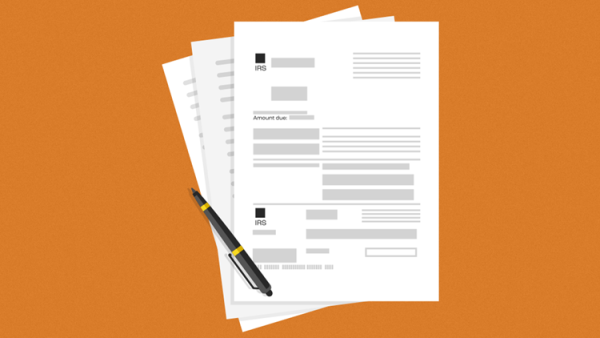
by Taxing Subjects | Sep 8, 2023 | Tax Tips and News
The push toward an all-electronic filing future continues at the IRS. The agency’s latest move has Form 8300, Report of Cash Payments Over $10,000, e-filed starting in 2024, in an effort to avoid backlogs that the old paper forms presented while speeding up processing times.
The shift is included in final regulations amending e-filing rules for information returns.
A Big Move Against Crime.
Any business that receives cash payments of more than $10,000 must report those payments to the federal government. While many of these transactions are legitimate, the information in Forms 8300 can help alert law enforcement to illegal financial activity by drug cartels, those who finance terrorists, or those who seek to evade taxes.
The new rule for Form 8300 fits in with current rules mandating businesses to electronically file other information returns – such as Forms 1099 and Forms W-2.
The Jan. 1, 2024, shift to electronic filing does have exemptions. E-filing is mandated if a business is required to file 10 information returns or more, other than Form 8300. For example, if a business files just five forms 1099-INT, and five Forms W-2, then the business has to e-file all its information returns, including any Forms 8300.
Conversely, however, any business not otherwise required to electronically file their information returns can still e-file if they wish.
Waivers or Exemptions are Available.
In cases where electronic filing information returns would create a hardship, business filers can seek a waiver from the IRS, using Form 8508, Application for a Waiver from Electronic Filing of Information Returns, available on the IRS.gov website. If the application is granted, the waiver applies to all Forms 8300 for the entire calendar year, but the filer should include the word “Waiver” on the top center of Page 1 on each Form 8300 when they submit a paper return.
Sometimes, the technology that’s needed to e-file may conflict with the filer’s religious beliefs. In that case, the IRS says the filer can paper-file their Form 8300 — as long as the words “RELIGIOUS EXEMPTION” are included on top-center of Page 1.
For the Best Experience, File Electronically.
Forms 8300 have to be filed no later than 15 days after a qualifying transaction. Filing electronically helps businesses make that deadline; they can even batch-file their reports, which is handy for those who have a lot of forms to upload. If a business has to file a late Form 8300, it should be labeled as such and filed in the same manner as a timely filed return. Late forms must carry the identifier “LATE” on the top center of Page 1, whether paper-filed or e-filed. When electronically filing, a free email acknowledgement of receipt will be sent to the filer. This receipt does not count as an official record.
In order to e-file Forms 8300, a business has to first create an account with the Financial Crimes Enforcement Network and its BSA E-Filing System.
Helpful resources for more information are easy to find. The Bank Secrecy Act E-Filing Help Desk can be reached either by phone (866-346-9478) or by email ([email protected]).
Check out E-file Form 8300: Reporting of large cash transactions for details on the reporting requirements, or the IRS’ video, How to Complete Form 8300 Part 1 and Part 2 for common mistakes and how to avoid them.
For more key information about details such as recordkeeping and Forms 8300, check out our source on the IRS website: Businesses must electronically file Form 8300, Report of Cash Payments Over $10,000, beginning Jan. 1, 2024
– Article provided by Taxing Subjects.

by Taxing Subjects | Aug 25, 2023 | Tax Tips and News
Any successful tax preparer knows how to navigate a constant state of flux, as financial regulations, laws, and client expectations can change at a moment’s notice. Staying informed, thus, is not just a preference – it’s a necessity. Clients rely upon your expertise as a tax preparer to help guide them through the complexities of the tax code, uncover opportunities for savings, and ensure compliance with regulations. In this constantly progressing environment, the role of trustworthy news sources becomes supreme. News is the compass that guides your practice, enabling you to provide the best service to your clients while maintaining professional integrity.
The reality of the dynamic tax industry underscores the need for tax preparers to stay abreast of legislative updates and tax law changes, but the scope of staying informed goes far beyond tracking changes in the tax code. In this post, your team at Drake Software hopes to delve into the practicalities of how staying informed can give you a competitive edge in your career as a preparer.
The Significance of News
The intricate nature of tax laws, regulations, and financial dynamics demands a constant awareness of the latest information and news within the industry. Remaining up to date isn’t merely a matter of maintaining pace; it’s about providing the best possible services to clients, ensuring compliance, and upholding professional standards. Staying ahead of changes ensures that tax preparers can navigate the complexities of the tax code with accuracy and confidence.
The significance of staying informed extends to industry trends and insights. Tax professionals must be attuned to emerging trends to remain relevant and competitive. For instance, technology updates play a pivotal role in shaping the efficiency and accuracy of tax preparation processes. In seeking knowledge about the latest software, tools, and automation options, tax preparers are empowered to streamline their workflow and deliver enhanced services.
Similarly, a focus on clientele is at the core of tax preparation, and personalized strategies are essential for catering to diverse financial scenarios characteristic of an assorted client base. In this way, the value of news that showcases client case studies comes into play, as well. Learning from real-life examples equips tax professionals with practical insights into tackling unique challenges and finding tailored solutions for clients. In seeking relevant news, tax preparers can be set up for success in better serving their own clients.
The IRS, as the authoritative source of tax regulations, announcements, and guidelines, also reinforces the importance of staying informed. As tax preparers receive timely updates from the IRS, they improve the likelihood of compliance with regulatory changes, avoiding penalties and errors that could arise from outdated information.
The importance of news for tax preparers is a fundamental precursor to success in the field, whether in the form of legislative updates, industry trends, client case studies, technology advancements, or ethical considerations. Staying informed is a demonstrated commitment to providing the highest level of service to clients, upholding professional integrity, and navigating the intricate web of tax regulations with finesse and confidence. As the tax industry continues to evolve, embracing news as a cornerstone of professional growth is a pathway to excellence in the realm of tax preparation.
Subject Areas of Importance
As mentioned in the previous section, there are a multitude of different subject areas on which tax preparers can receive industry news. We’ve highlighted a few high-level examples to aid you in seeking streamlined, personalized content that best serves you in your practice as a tax preparer.
1. Legislative Updates and Tax Law Changes
Applying to virtually all preparers in the industry, staying current with the latest changes in tax laws and regulations is essential. Accuracy and education in this area ensures accurate tax preparation, compliance, and the ability to offer clients up-to-date advice, ultimately safeguarding their financial interests.
2. Industry Trends and Insights
Explore emerging trends shaping the tax industry and adjust as needed to better meet evolving client needs. You may also learn about new strategies or practices which can help you maintain a competitive edge in a rapidly growing career landscape.
3. Tax Planning Strategies
Another source of news you might seek is effective tax-saving strategies and planning techniques. This area is crucial to optimize clients’ financial situations, maximize deductions and credits, and provide customized advice that minimizes tax liabilities within the bounds of the law.
4. Technology Advancements
Keep up with the latest technology tools transforming tax preparation. Staying informed about technological advancements enables you to leverage automation, AI, and streamlined processes, leading to greater efficiency, accuracy, and client satisfaction.
5. Client Case Studies and Success Stories
Learn from real-life scenarios and successful outcomes to supplement your knowledge of differing client circumstances, ultimately aiding your expertise in tax preparation. Understanding client cases helps you apply proven strategies to complex situations, delivering personalized solutions that resonate with clients’ unique needs.
6. IRS Announcements and Guidelines
Continuously seek and stay up to date with official IRS announcements and guidelines. Pursuing information from the IRS consistently will help you remain compliant with IRS regulations, report accurately, and avoid costly penalties that could result from outdated or incorrect information.
7. Ethical and Professional Standards
Research news in this subject area to increase your knowledge of ethical considerations and professional standards. Staying informed about ethics helps you maintain integrity, uphold confidentiality, and navigate potential conflicts of interest, fostering trust with clients and peers.
8. State and Local Tax Updates
Depending on your location, you may also want to stay informed about state and local tax laws and regulations. This knowledge is essential when serving clients across different jurisdictions, ensuring accurate compliance and preventing potential errors.
9. Continuing Education Opportunities
Another excellent subject area to pursue is ongoing learning through various educational resources. Staying informed about continuing education opportunities allows you to sharpen your skills, stay updated on industry developments, and maintain professional certifications.
10. Personal Finance Insights
Finally, you may seek news specifically targeted to help you gain insights into personal finance, investments, and retirement planning. Understanding personal finance helps you provide holistic advice to clients, addressing their financial concerns beyond tax preparation.
By exploring each of these subject areas, tax professionals can enhance their expertise, offer more value to clients, and navigate the complexities of tax preparation with confidence.
Where To Go
Now that we’ve established the type of news you may want to pursue as a tax preparer, we also want to provide a few resources so that you know where to find such information.
The official news source from the Internal Revenue Service provides updates on tax law changes, regulations, and announcements. Alternatively, another IRS webpage that is helpful for tax preparers specifically is the Tax Pro News and Resources page.
A publication of the American Institute of CPAs (AICPA) providing in-depth articles on tax planning strategies and insights.
Published by the AICPA, this journal includes real-world case studies and success stories relevant to tax professionals.
This resource for National Association of Tax Professionals members is filled with relevant articles, tax code updates, Q&As and special industry announcements, guides and studies. This TAXPRO Weekly email newsletter covers the most pressing tax law updates, current developments and resources.
Our comprehensive blog offers multiple posts per week, intentionally strategized to serve tax preparers on a range of subjects. Whether you’re a seasoned professional in the industry or seeking to begin your career as a tax professional, we are guaranteed to have a post for you to help you better serve your clients, streamline your processes, and provide timely information regarding industry updates.
In the ever-evolving field of tax preparation, the significance of staying informed cannot be overstated. Consistently staying informed from a variety of news platforms offers necessary guidance and direction for your practice as a tax professional, from navigating tax codes and changing regulations to prioritizing your clients’ dynamic needs. By immersing yourself in legislative updates, industry trends, technological advancements, and ethical considerations, you can empower yourself to provide accurate guidance, innovative strategies, and unwavering professionalism.
– Article provided by Taxing Subjects.
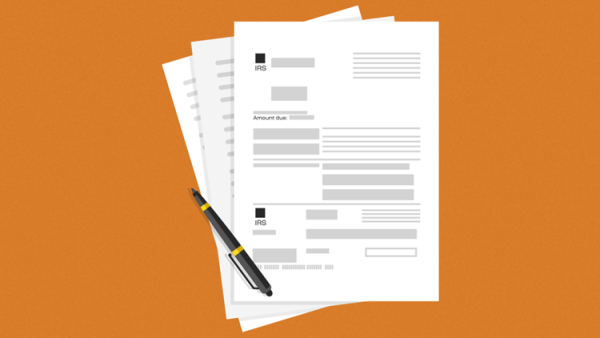
by Taxing Subjects | Aug 25, 2023 | Tax Tips and News
As recovery efforts are underway for victims of the devastating wildfires in Hawaii, the Internal Revenue Service is moving to give survivors one less thing to worry about.
The agency has launched its tax relief package for victims in Maui and Hawaii counties that basically delays an array of federal individual and business tax deadlines until February 15, 2024.
Relief is available to any taxpayer who lived or operated a business within the federal disaster declaration issued by the Federal Emergency Management Agency (FEMA). A list of towns and other localities currently included is available on the disaster relief page of the IRS.gov website.
Wildfire Victims Have Until February 15 to file 2022 Returns and Pay Tax Due.
The postponement period covers a wide range of filing and payment deadlines that would otherwise have occurred between August 8 of this year and the new deadline of February 15, 2024.
The new 2024 deadline includes:
- Taxpayers with a valid extension that is due to expire on Oct. 16, 2023. It should be noted, however, that since payments for 2022 tax due were required before the wildfire event, those payments aren’t covered by the new 2024 deadline.
- Quarterly estimated income tax payments normally due on Sept. 15, 2023, and Jan 16, 2024.
- Quarterly payroll and excise tax tax returns that otherwise would have been due on Oct. 31, 2023, and Jan. 31, 2024.
- Calendar-year partnerships and S corporations with 2022 extensions due to expire Sept. 15.
- Calendar-year partnerships with 2022 extensions due to expire on Oct. 16.
- Calendar-year tax-exempt organizations with extensions expiring on Nov. 15.
- Business taxpayers should remember that penalties for failure to make required payroll and excise tax deposits between Aug. 8 and Sept. 7 are abated, as long as deposits are made by Sept. 7.
Complete details are available on other returns and payments on the Disaster Assistance and Emergency Relief for Individuals and Businesses page on the IRS website.
Relief Package Also Covers Others Affected by the Disaster.
What about others who are affected by the fires, but aren’t residents of the disaster area? Consider the case of a taxpayer who lives outside the disaster area but lost the records necessary to meet a tax deadline in the disaster. These victims should call the IRS at 866-562-5227 to find out what relief the agency may have available for them.
Conversely, taxpayers who live within the federal disaster area do not need to call the IRS in order to qualify for the tax relief package. The IRS says benefits are tied to the taxpayer’s address of record on file with the agency, and so are enabled automatically when their returns are received.
In some cases, taxpayers may not have an address of record on file with the agency, because, for example, they may have moved into the disaster area after they filed their return. Due to circumstances, these taxpayers could find a late-filing or late-payment notice in their mailbox. These taxpayers should call the phone number stated on their printed notice letter to get the penalty abated, per the IRS.
Filing After the Fire Explained.
When it comes down to how to claim their losses on a tax return, it is the taxpayer’s choice.
Individual and business taxpayers within the federal disaster area can claim their uninsured or unreimbursed losses from the disaster in one of two ways. The loss can be claimed on the return for the year the loss occurred (in this case, on the 2023 return, normally filed in 2024) or on the return for the prior year, which would be 2022.
Any return claiming a disaster loss should have the FEMA declaration number, DR-4724-HI, displayed on the return. For more details on claiming a loss, check out Publication 547.
In general, qualified disaster relief payments are excluded from gross income. This usually means money received from a government agency for reasonable and necessary expenses, whether personal, family, living or funeral expenses, for repair or rehabilitation of a home, or for repair or replacement of a home’s contents.
More information on disaster payments is available in IRS Publication 525 on the IRS website.
Source: IRS: Hawaii wildfire victims qualify for tax relief; Oct. 16 deadline, other dates postponed to Feb. 15
– Article provided by Taxing Subjects.








